
¡Hola, amigos! Hoy les traigo el resumen y análisis de un maravilloso libro que acabo de terminar de leer, se trata de La Divina Comedia, de Dante Alighieri, un célebre poeta florentino de la edad media que conquistó al mundo con su obra maestra más famosa.

Dante estaba enamorado platónicamente de Beatriz, una mujer que llamaba su atención por su bondad y hermosura, pero ella lamentablemente murió el 9 de junio de 1290, por lo tanto él entró en una profunda tristeza que posteriormente se transformó en arte cuando escribió su obra más célebre. Posteriormente, Dante comenzó a profundizar en clásicos de autores latinos como el poeta Virgilio (a quien incluye en su obra) Horacio y Ovidio, también se instruye en la doctrina moral de Cicerón, Séneca y Boecio, pero al mismo tiempo se interesa por los pensamientos filosóficos y teológicos de Alberto Magno y Tomás de Aquino.
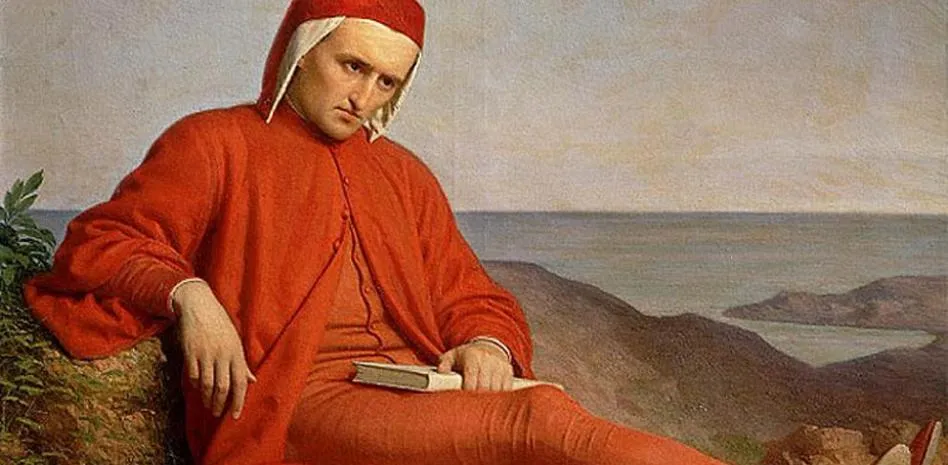
Después de su paso por la política, Dante se decepciona y decide dejar su natal Florencia, es allí cuando comienza a escribir su obra maestra a la que decidió llamar «Comedia», pero más tarde el reconocido autor Boccaccio le añadió el apelativo de «Divina» y por lo tanto hoy en día conocemos a esta obra como «La Divina Comedia»
La Divina Comedia es una poema que consta de tres partes: Infierno, Purgatorio y Paraíso. Dante estuvo 15 años escribiéndolo. El poeta escribió la parte del infierno durante 4 años, desde 1304 hasta 1307, el purgatorio lo escribió durante 6 años, desde 1307 hasta 1313, y finalmente el paraíso, escribir esta parte le llevó 7 años, desde 1313 hasta 1321.
El infierno
El Infierno costa de 9 círculos en los cuales las almas de los condenados sufren eternamente por sus pecados. Dante se encuentra con Virgilio (uno de los poetas que solía admirar) quien a partir de este momento se convertirá en su guía por los diferentes círculos del infierno y el purgatorio.
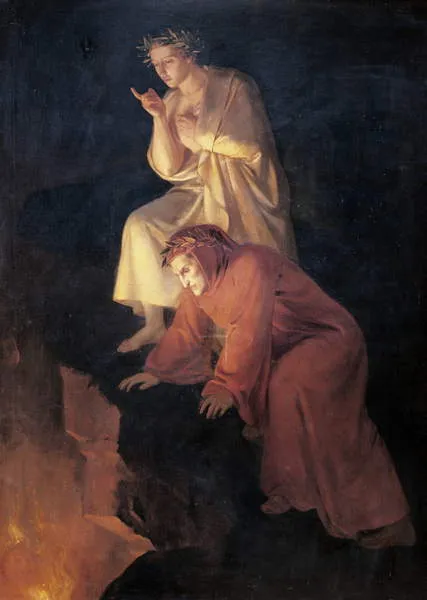
En el primer círculo del infierno está El Limbo, lugar donde las almas no sufren físicamente porque sus pecados no son tan graves, pero su castigo es no ver a Dios, ya que en vida todos fueron paganos y no estaban bautizados. A este círculo pertenece Virgilio. En el infierno las almas no pueden trascender ni moverse de un círculo a otro, pero Virgilio es la excepción a la regla porque su trabajo es guiar a Dante.
En el segundo círculo, están los lujuriosos e incluso Dante puede ver que allí están algunos personajes reconocidos como Cleopatra, Aquiles, Helena de Troya y París. Es importante recalcar que durante su paso por el infierno, Dante encontrará a muchos personajes relevantes de la política y la iglesia, como una férrea crítica al sistema. En este círculo, las almas de los lujuriosos son atacadas por una fuerte ráfaga de viento que los arroja a unos sobre otros violentamente, haciéndose mucho daño, ya que durante la vida, todos ellos se dejaron llevar por sus bajas pasiones.
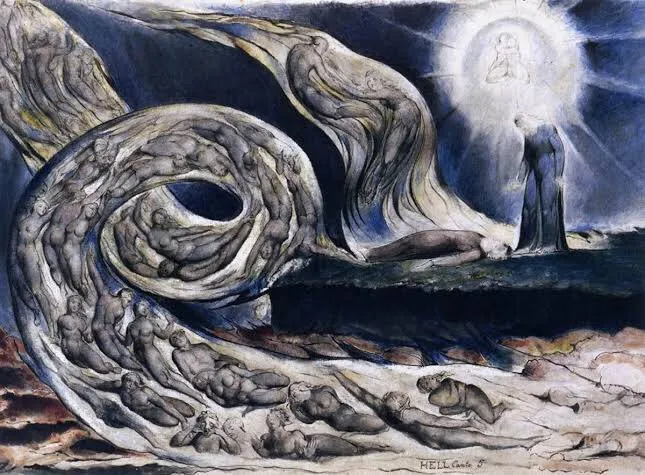
En el tercer circulo, Dante y Virgilio encuentran a Cervero, un perro de tres cabezas que custodia el lugar. Allí se encuentran los que durante su vida cometieron el pecado de la gula. Estas personas son condenadas a comer una masa asquerosa, podrida y hedionda, a veces el perro los ataca, desgarrándoles la espalda con sus zarpas, y además tienen que soportar la constante caída del granizo.
En este tercer círculo además se encuentran los que cometieron el pecado de Simonía, es decir, los que se enriquecieron a costa de la fe, vendiendo indulgencias o bendiciones. Las almas están enterradas en fosas desde las cuales solo sobresalen las piernas que agitan con desesperación porque a cada rato se incendian. Allí Dante encuentra a un hombre que le dice que debajo de su cabeza están sepultados los demás papas que cometieron el pecado de simonía, y que están a la espera de Bonifacio, uno que se aprovechó de una mujer tratándola indignamente.

En el cuarto círculo están los avaros y derrochadores, que son obligados a cargar con grandes rocas extremadamente pesadas.
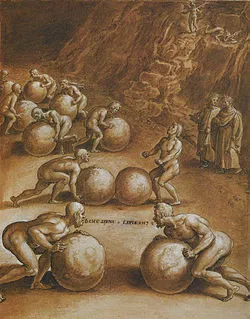
En el quinto círculo están los iracundos, soberbios y envidiosos. Los iracundos se pelean entre sí hasta arrancarse la piel a mordidas.
En el sexto círculo están los herejes, obligados a soportar lluvias de fuego. En este lugar Dante y Virgilio se encuentran con Alejandro Magno.
En el séptimo lugar están los que cometieron el pecado de la violencia contra otros o contra sí mismos, como los suicidas. Allí los condenados se convierten en árboles que son constantemente atacados por arpías. Para demostrarle a Dante que aquellos árboles realmente eran personas, Virgilio le pide que arranque una rama, y al hacerlo, ésta se rompe y comienza a salir sangre, además el «árbol» se queja, algo que hizo sentir mal a Dante. Allí la gente le suplica al poeta que lleve mensajes a su familia cuando regrese a la tierra, y que les pida que no cometan esos pecados para evitarse los sufrimientos eternos.
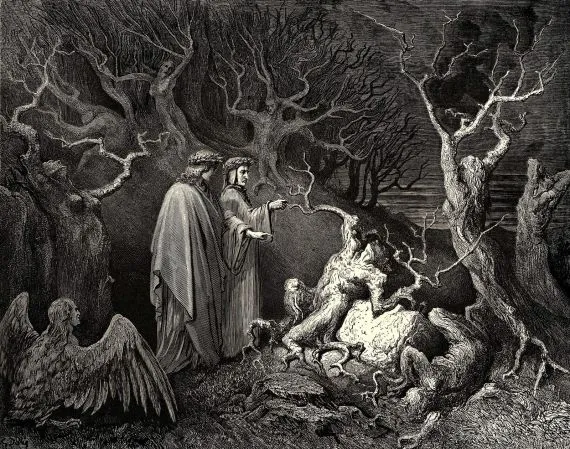
El octavo círculo está lleno de fraudulentos, ladrones y proxenetas, todos sumergidos en un río de excremento. Los políticos corruptos son sumergidos en brea ardiente, y los adivinos, aquellos que siempre se empeñaron en ver el futuro, son obligados a mirar siempre hacia atrás, ya que su cabeza está girada 180 grados sobre su espalda.
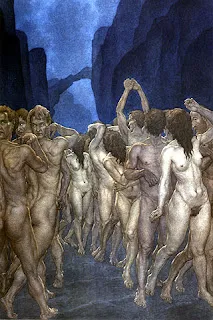
Dante y Virgilio se vieron en la necesidad de huir de un par de demonios que querían hacerles daño, y de esta forma llegaron al peor de todos los círculos del infierno, el noveno, donde se castiga a los traidores, todos aquellos que traicionaron a su patria, a sus amigos o a sus familiares. En ese lugar hace un frío terrible que mantiene a los condenados congelados hasta las pestañas. Justo en el medio de ellos está Satanás, gigantesco e implacable. Él tiene tres rostros, cuyas bocas mastican a un traidor (Bruto, Casio y Judas Iscariote). La boca de la cara del medio es la que mastica a Judas, el peor de los traidores en la historia de la humanidad.
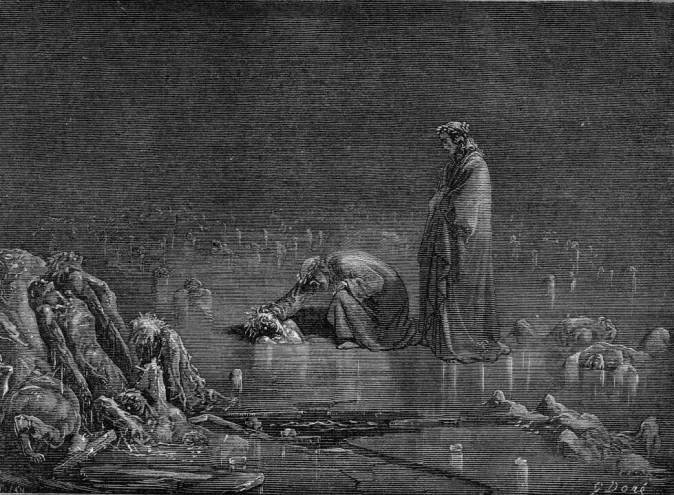
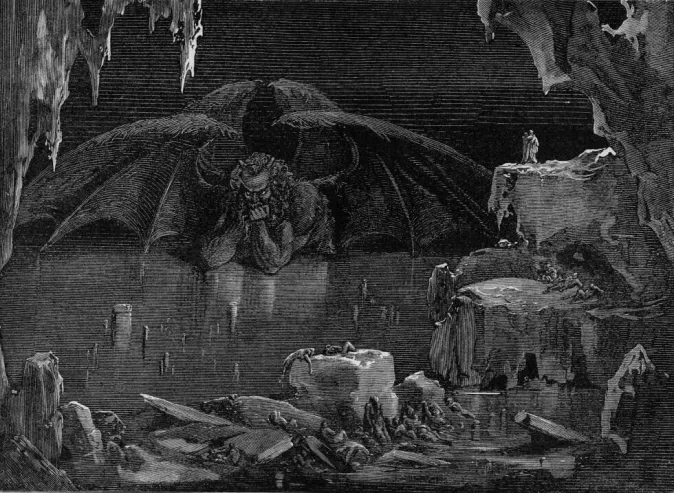
Explicación gráfica del Infierno de Dante.
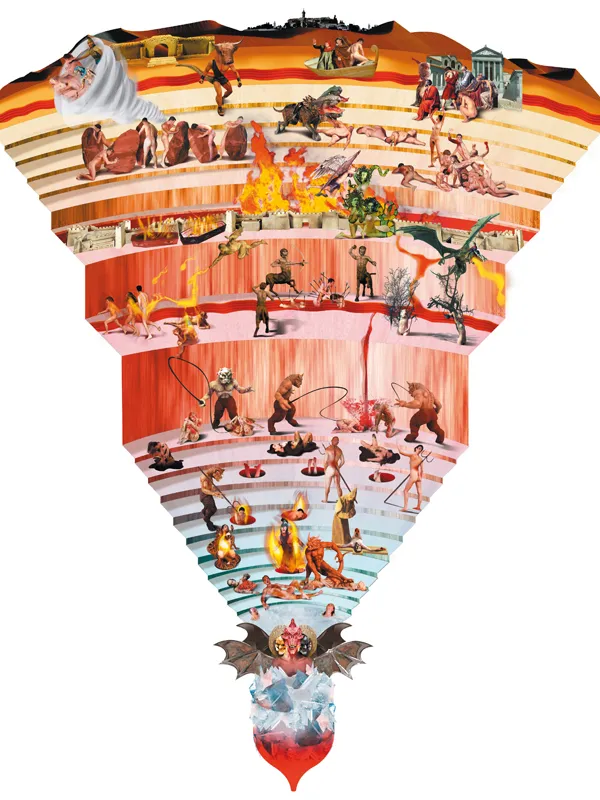
El Purgatorio
El purgatorio consta de 7 círculos donde son purgados los siete pecados capitales, no obstante las personas que están allí en lugar del infierno, es porque se arrepintieron de sus pecados antes de morir. Los condenados deben estar en ese lugar, expiando sus culpas hasta que se cumpla el plazo necesario, cuando pueden trascender e ir subiendo de círculo hasta llegar al cielo, no obstante el tiempo de permanencia se puede acortar en la medida en que alguien en la tierra rece por ellos.
En la puerta del purgatorio hay un ángel que marca en la frente de Dante siete «P», correspondientes a los siete pecados capitales. Virgilio le advierte a Dante que estas letras irán desapareciendo de su frente a medida que ellos avancen en el camino, y de esta manera se irá sintiendo más ligero y cómodo, a pesar de que vayan cuesta arriba.
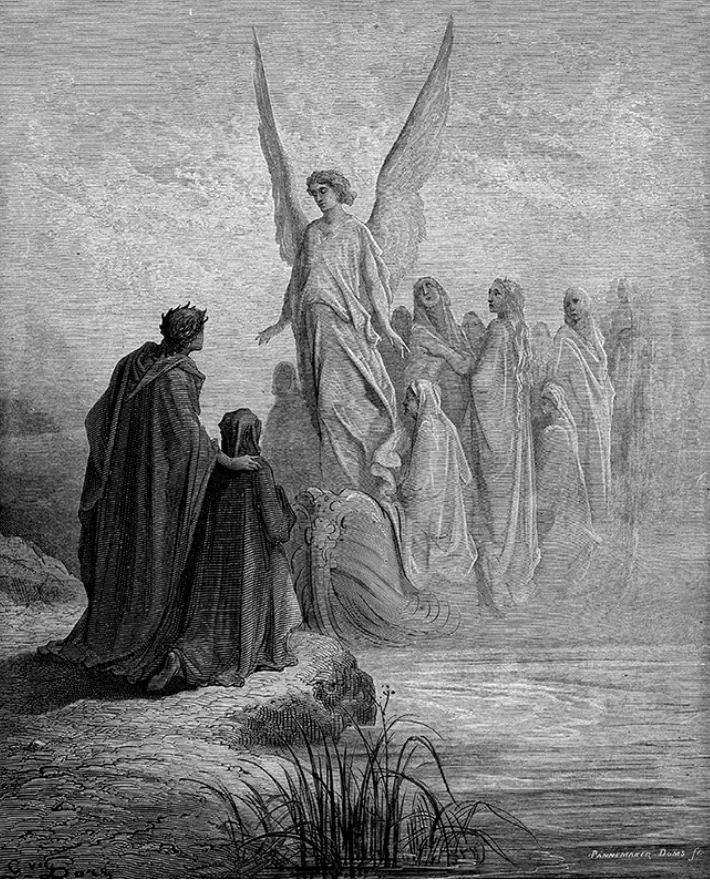
En el primer círculo se encuentran los soberbios que se arrastran por el suelo sin poder levantarse, en castigo por haber permanecido con la frente en alto siempre, creyéndose superiores a sus semejantes mientras estaban en la tierra.
En el Segundo círculo están los envidiosos que tienen los labios cosidos.
Lo iracundos están en el tercer círculo, escondidos entre un denso humo.
Los perezosos están forzados a trabajar incansablemente en el cuarto círculo del purgatorio.
En el quinto círculo están los avaros, tirados de bruces en el suelo, sin poder moverse.
Los golosos están en el sexto círculo, siempre hambrientos y rodeados de frutos deliciosos que no pueden alcanzar.
Y finalmente, en el último círculo están los lujuriosos que se queman hasta expiar su pena.
Al llegar a este punto, Dante ya no tiene ni una sola «P» en su frente y por lo tanto está apto para seguir avanzando. Virgilio se despide de él ya que no puede seguir avanzando porque es pagano y por lo tanto no puede entrar en el cielo. Dante lo comprende, aunque está muy apesadumbrado por su amigo, no obstante las expectativas de ver a su amada Beatriz en el Paraíso lo mantienen alentado.
El Paraíso
El cielo consta de nueve niveles y al igual que en el infierno, las personas que están allí no pueden avanzar entre uno y otro, no obstante, todos son felices allí, en cualquiera de los círculos que lo componen.
En este lugar Dante es recibido por San Bernardo quien lo guía en su travesía donde se encuentra con algunos personajes de su época, como una monja que afirma vivir feliz en ese lugar. Posteriormente, él y San Bernardo llegan a un lugar donde encuentran a Beatriz cuyo rostro está oculto por un velo. Dante está feliz de verla, pero ella le dice que para seguir avanzando, debe lavarse en un río, para poder purificarse ya que está en tierra santa. Beatriz está acompañada por un séquito de vírgenes que, conmovidas por Dante, le piden a ella que se descubra el rostro para que él pueda verla. Beatriz accede y Dante entonces se recrea en su belleza divina.
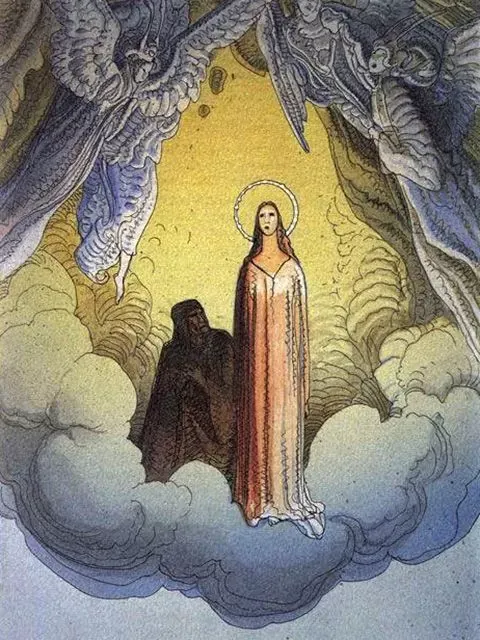
En el cielo hay siete esferas que representan a los planetas y satélites como la luna, mercurio, el sol, venus, júpiter, saturno y las estrellas fijas y móviles. Beatriz le muestra a Dante todas las bellezas del paraíso, los ángeles que vuelan como abejas entre cantos sacros y alabanzas a Dios. Todo a su alrededor es hermoso y resplandeciente, tanto que Beatriz llega a pensar en un momento que tal vez la naturaleza mortal de Dante no pueda soportar tanta santidad, no obstante él puede avanzar y se maravilla en la penúltima esfera donde ve a la virgen María, sentada en un lugar especial en los pétalos de una inmensa rosa donde se encuentran también muchos ángeles y personas santas.
Beatriz se despide de Dante para tomar su lugar en aquella rosa, y él se queda absorto en la contemplación de Dios que está en el punto más álgido de las esferas, un lugar llamado «El Empíreo». Dante representa a Dios como un punto extremadamente luminoso y hermoso, donde se alcanza la felicidad extrema.
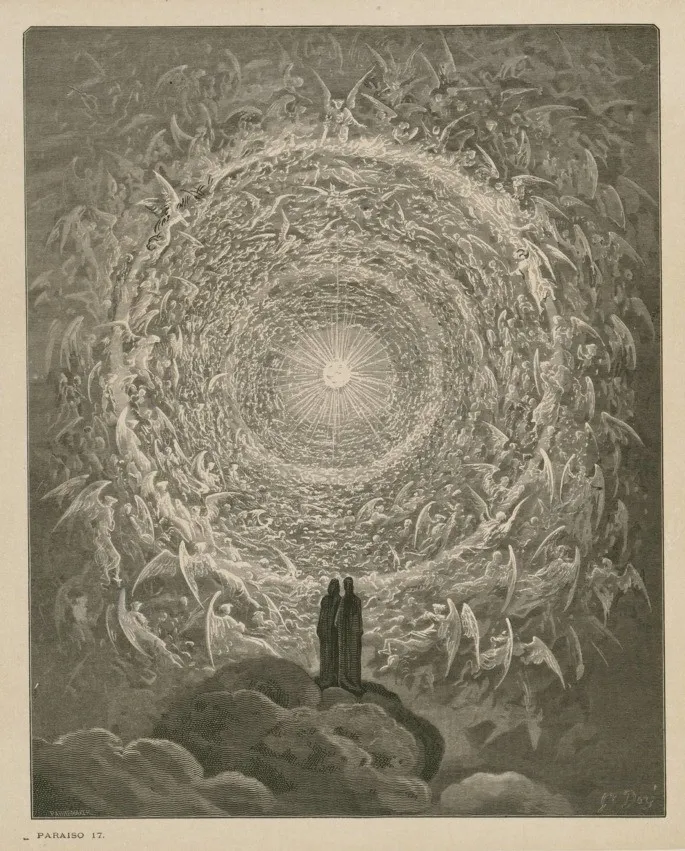
Mi opinión
Luego de la muerte de Beatriz, Dante intentó refugiarse en la política, pero sufrió muchas decepciones a causa del egoísmo, envidia y odio, no solo por parte de sus compañeros, sino de miembros de la iglesia, razón por la cual decidió desahogarse de alguna forma y por ello los ubicó en un lugar especial del infierno, basándose en sus fuertes creencias cristianas. La Divina Comedia no solo es un hermoso poema épico, una epopeya donde un hombre va en busca de su amada, sino una crítica al sistema que se ha vivido desde tiempos remotos: La hipocresía de algunos miembros de la iglesia y la avaricia de algunos políticos que se enriquecen a costa del sufrimiento del pueblo, en este punto es importante recalcar las palabras de la biblia «Debes atesorar en el cielo, no en la tierra» que hacen referencia precisamente a la avaricia.
Es una crítica a los excesos, al derroche, a todas esas personas que llevan una vida desmedida y egoísta, sin importar los sentimientos de los demás.
Sin embargo, y a pesar de sus decepciones, Dante no generalizó, ni tampoco juzgó por igual a todos los miembros de la iglesia y la sociedad en general, a sabiendas de que algunos sí tienen verdadera vocación de servicio, que incluso están dispuestos a sacrificar sus vidas por los demás, y aquí vale citar nuevamente a la biblia «Hay de todo en la viña del señor».

Esto ha sido todo por el post de hoy, amigos, espero que les haya gustado mi análisis y que se animen a leer esta maravillosa obra. Les confieso que no es sencilla de leer, y que quizá muchas veces tengan que detenerse y releer, pero les aseguro que descubrirán muchas cosas interesantes. Gracias por toda su atención, nos vemos en otra oportunidad.
La información que obtuve para la realización de este post está en el libro La Divina Comedia de Dante Alighieri.
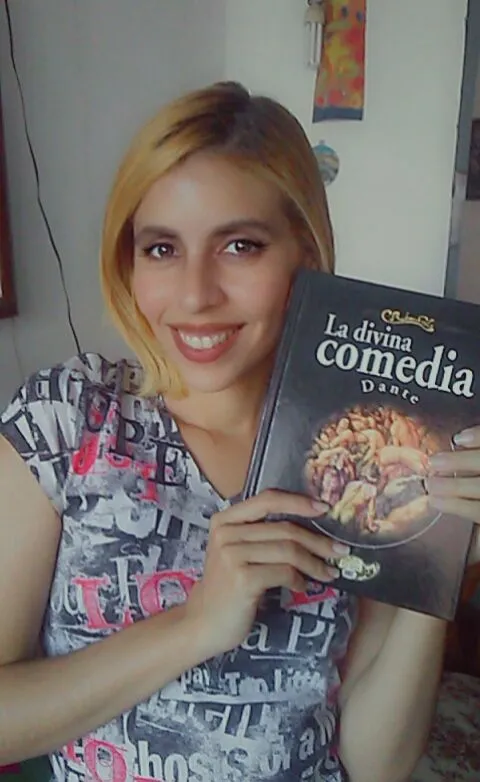


Hello, friends! Today I bring you the summary and analysis of a wonderful book that I just finished reading, it's The Divine Comedy, by Dante Alighieri, a famous Florentine poet of the Middle Ages who conquered the world with his most famous masterpiece.
Dante was platonically in love with Beatrice, a woman who attracted his attention for her kindness and beauty, but she unfortunately died on June 9, 1290, so he entered into a deep sadness that was later transformed into art when he wrote his most famous work. Subsequently, Dante began to delve into the classics of Latin authors such as the poet Virgil (whom he includes in his work) Horace and Ovid, he also learns about the moral doctrine of Cicero, Seneca and Boethius but at the same time he is interested in the philosophical and theological thoughts of Albertus Magnus and Thomas Aquinas.

After his time in politics, Dante was disappointed and decided to leave his native Florence, it's there when he began to write his masterpiece which he decided to call "Comedy", but later the renowned author Boccaccio added the appellative of "Divine" and therefore today we know this work as "The Divine Comedy".
The Divine Comedy is a poem consisting of three parts: Hell, Purgatory and Paradise. Dante spent 15 years writing it. The poet wrote the hell part for 4 years, from 1304 to 1307, the purgatory part for 6 years, from 1307 to 1313, and finally the paradise part took him 7 years to write, from 1313 to 1321.
The hell
The Hell consists of 9 circles in which the souls of the damned suffer eternally for their sins. Dante meets Virgil (one of the poets he used to admire) who from this moment on will become his guide through the different circles of hell and purgatory.
In the first circle of hell is Limbo, a place where the souls do not suffer physically because their sins are not so serious, but their punishment is not to see God, since in life they were all pagans and were not baptized. Virgilio belongs to this circle. In hell souls cannot transcend or move from one circle to another, but Virgil is the exception to the rule because his job is to guide Dante.

In the second circle, there are the lustful and even Dante can see that there are some recognized characters such as Cleopatra, Achilles, Helen of Troy and Paris. It's important to emphasize that during his passage through hell, Dante will find many relevant characters of politics and the church, as a fierce criticism of the system. In this circle, the souls of the lustful are attacked by a strong gust of wind that throws them on each other violently, hurting each other a lot, since during life, all of them were carried away by their low passions.
In this third circle there are also those who committed the sin of Simony, that is, those who enriched themselves at the expense of faith, selling indulgences or blessings. The souls are buried in pits from which only the legs protrude, which they shook with desperation because they are on fire every now and then. There Dante meets a man who tells him that under his head are buried the other popes who committed the sin of simony, and that they are waiting for Boniface, one who took advantage of a woman treating her unworthily.

In the fourth circle are the greedy and wasteful, who are forced to carry large, extremely heavy rocks.

In the fifth circle are the wrathful, proud and envious. The wrathful fight each other until they bite each other's skin off.
In the sixth circle are the heretics, forced to endure showers of fire. In this place Dante and Virgil meet Alexander the Great.
In the seventh place are those who committed the sin of violence against others or against themselves, such as suicides. There the damned become trees that are constantly attacked by harpies. To prove to Dante that those trees were really people, Virgilio asks him to tear off a branch, and when he does so, it breaks and blood starts to come out, and the "tree" complains, something that made Dante feel bad. There the people beg the poet to take messages to their family when he returns to earth, and to ask them not to commit those sins in order to avoid eternal suffering.

The eighth circle is full of fraudsters, thieves and pimps, all submerged in a river of excrement. Corrupt politicians are submerged in burning pitch, and soothsayers, those who always insisted on seeing the future, are forced to always look backwards, as their heads are turned 360 degrees on their backs.

Dante and Virgilio were forced to flee from a couple of demons who wanted to harm them, and in this way they arrived at the worst of all the circles of hell, the ninth, where traitors are punished, all those who betrayed their homeland, their friends or their families. In that place it's terribly cold, keeping the damned frozen to their eyelashes. Right in the middle of them is Satan, gigantic and implacable. He has three faces, whose mouths chew on a traitor (Brutus, Cassius and Judas Iscariot). The mouth on the middle face is the one that chews Judas, the worst traitor in the history of mankind.


Graphic explanation of Dante's Inferno.

The Purgatory
Purgatory consists of 7 circles where the seven deadly sins are purged, however the people who are there instead of hell, is because they repented of their sins before dying. The condemned must be in that place, expiating their sins until the necessary time is fulfilled, when they can transcend and go up the circle until they reach heaven, however the time of permanence can be shortened to the extent that someone on earth prays for them.
At the door of purgatory there is an angel who marks on Dante's forehead seven "P", corresponding to the seven deadly sins. Virgilio warns Dante that these letters will disappear from his forehead as they advance along the path and in this way he will feel lighter and more comfortable, even though they are going uphill.

In the first circle are the proud who crawl on the ground without being able to get up, in punishment for having always stood with their heads held high, believing themselves superior to their fellow men while on earth.
In the second circle are the envious who have their lips sewn together.
The wrathful are in the third circle, hidden in dense smoke.
The lazy are forced to work tirelessly in the fourth circle of purgatory.
In the fifth circle are the misers, lying on their faces on the ground, unable to move.
And finally, in the last circle are the lustful who burn until they atone for their sorrow.
At this point, Dante no longer has a single "P" on his forehead and is therefore fit to move on. Virgilio bids him farewell as he cannot go any further because he is a pagan and therefore cannot enter heaven. Dante understands, although he is very sorry for his friend, however the expectation of seeing his beloved Beatrice in Paradise keeps him encouraged.
The Heaven
Heaven consists of nine levels and, as in hell, the people there cannot advance from one to another, but everyone is happy there, in any of the circles that compose it.
In this place Dante is received by Saint Bernardo who guides him on his journey where he meets some characters of his time, such as a nun who claims to live happily in that place. Later, he and St. Bernard arrive at a place where they meet Beatrice whose face is hidden by a veil. Dante is happy to see her, but she tells him that in order to move on, he must wash himself in a river, in order to purify himself since he is on holy ground. Beatrice is accompanied by a retinue of virgins who, moved by Dante, ask her to uncover her face so that he can see her. Beatriz agrees and Dante then revels in her divine beauty.

In the heaven there are seven spheres representing the planets and satellites such as the moon, mercury, the sun, Venus, Jupiter, Saturn and the fixed and moving stars. Beatrice shows Dante all the beauties of paradise, the angels flying like bees among sacred songs and praises to God. Everything around him is beautiful and resplendent, so much so that Beatrice comes to think at one moment that perhaps Dante's mortal nature cannot bear so much holiness, nevertheless he is able to move forward and marvels at the penultimate sphere where he sees the Virgin Mary, seated in a special place on the petals of an immense rose, where there are many angels and holy people.
Beatrice takes leave of Dante to take her place in that rose, and he becomes absorbed in the contemplation of God who is at the highest point of the spheres, a place called "The Empyrean". Dante represents God as an extremely luminous and beautiful point, where extreme happiness is reached.

My opinion
After Beatriz's death, Dante tried to take refuge in politics, but he suffered many disappointments because of selfishness, envy and hatred, not only from his peers, but also from members of the church, which is why he decided to unburden himself in some way and therefore placed them in a special place in hell, based on his strong Christian beliefs. The Divine Comedy is not only a beautiful epic poem, where a man goes in search of his beloved, but a criticism of the system that has been lived since ancient times: The hypocrisy of some members of the church and the greed of some politicians who get rich at the expense of the suffering of the people, at this point it's important to emphasize the words of the bible "You must treasure in heaven, not on earth" that refer precisely to greed.
It's a criticism to excesses, to wastefulness, to all those people who lead an excessive and selfish life, without caring about the feelings of others.
However, despite his disappointments, Dante didn't generalize, nor did he judge equally all members of the church and society in general, knowing that some do have a true vocation of service, that they are even willing to sacrifice their lives for others, and here it is worth quoting again the bible "There is everything in the Lord's vineyard".

This has been all for today's post, friends, I hope you liked my analysis and that you are encouraged to read this wonderful work. I confess that it is not easy to read, and that you may have to stop and reread many times, but I assure you that you will discover many interesting things. Thank you for all your attention, see you another time.
The information I obtained for the realization of this post is in the book The Divine Comedy by Dante Alighieri.


